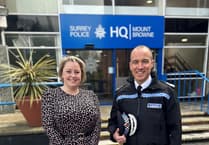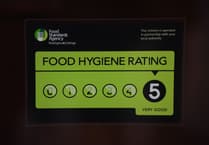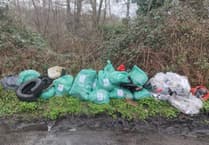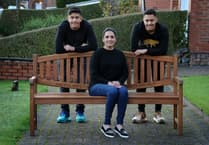THERE was a time when you could let the train take the strain and then take aim at Bisley.
This was on a one-and-a-half-mile branch line from Brookwood station to the National Rifle Association’s camp at Bisley, opened in 1890.
The train was affectionately known to those who traveled on it as the Bisley Bullet. The line was usually open for about a month each year during the NRA’s annual meeting and championships.
However, the line was heavily used at other times, particularly during the two world wars, when many soldiers came to the ranges for training purposes. During the First World War the line was extended to connect the military camps at Pirbright, Deepcut and Blackdown.
That part of the line was taken up in the 1920s, only to be relaid again as far as Pirbright camp during the Second World War.
Although trains traversed the line at the slow speed of about 10mph, there were mishaps. On 11 April 1898, 250 volunteer soldiers of the 15th Middlesex Rifles were sitting in a train’s carriages waiting to leave Bisley Camp station. In a mishap, the steam locomotive backed on to the train with such force many of the men were injured, 23 of them seriously.
In its report the News & Mail noted: “Some accounts of the affair put the speed at which the engine backed on to the train at twenty miles an hour, but whether that was so or not, it dashed into the stationary carriages with terrific force.”
While on 4 July 1947, a train making its way to Brookwood station was in collision with a Woking Gas Co’s van at the level crossing on Cowhsott Common. The van was pushed 50 yards down the track and the two men in it were lucky to escape with only minor injuries.
The end of the Bisley Camp branch line came on 19 July 1952. In its edition of 25 July, the News & Mail reported the scenes as 200 people crowded into the final train. It wrote: “What a party they threw to say goodbye to the little train.
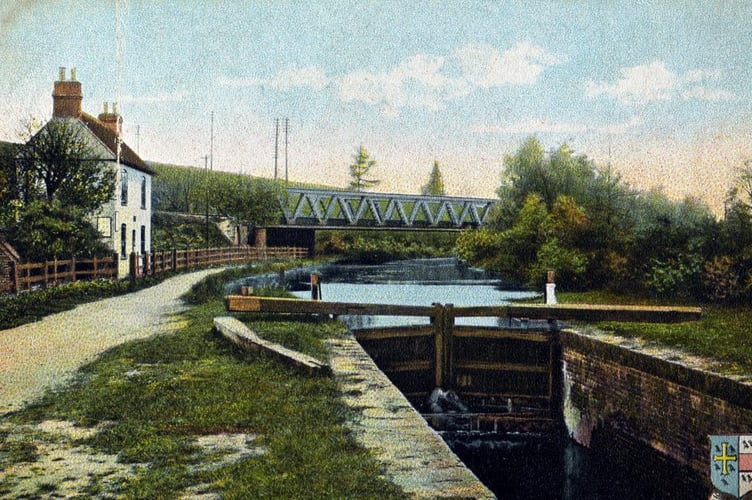
“The last one mile [and] 55 chains back to Brookwood station were made in a carnival style. On the front of the engine was its name board – the only time it has carried one – ‘Bisley Bullet, 1890-1952’. By this time passengers were riding on the running-boards and on the roofs of the coaches. Multi-coloured streamers floated across the train.
“All the way along the track fog signals had been placed. Crowds waiting on Brookwood station traced the progress of this last journey by the noise of the explosions as the train passed over them.
“Then came the triumphal entry into Brookwood station. From the roof of the first coach a Cambridge University student waved a large blue flag. As the train crawled into the platform at funeral speed the pipe band on the platform struck up a mournful lament.
“A large blue coffin was carried solemnly shoulder high through crowds and off the station, preceded by the name board. On the coffin was the simple inscription: ‘Message Five – Clear Target’.
“Then the autograph hunters descended on the train crew. Engine Driver G. Lindsay of Guildford Locomotive Depot spent nearly quarter of an hour signing tickets, scraps of paper and – just one or two – autograph books. Fireman Snow disappeared.
“Later the engine returned to Guildford The two coaches have been sent to Clapham Junction and from there, as part of an inglorious freight train, they will be returned to Callington, Cornwall where, on a quiet branch line far removed from the riotous splendour of Bisley Week they will carry passengers through the rich farm lands and bleak moorlands of the west. And next year passengers for Bisley rifle meetings will travel from Brookwood by bus.”
Thanks to Mark Coxhead who provided additional information for this story and to Ben Darnton who supplied the photo from the collection of Tony Ford.
If you have some memories or old pictures relating to the Woking area, call me, David Rose, on 01483 838960, or drop a line to the News & Mail.
David Rose is a local historian and writer who specialises in what he calls “the history within living memory” of people, places and events in the west Surrey area covering towns such as Woking and Guildford. He collects old photos and memorabilia relating to the area and the subject, and regularly gives illustrated local history talks to groups and societies. For enquiries and bookings please phone or email him at: [email protected]

